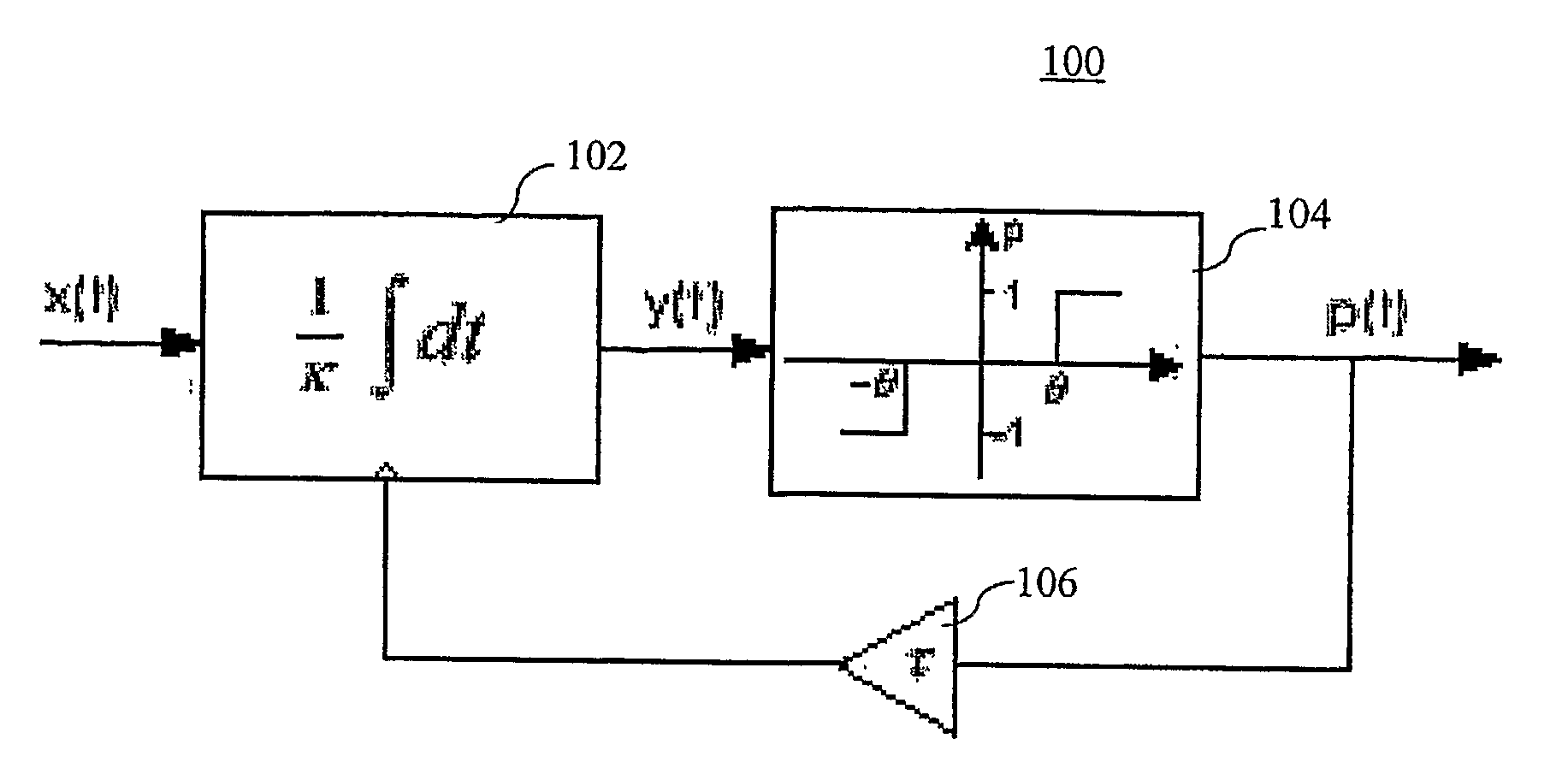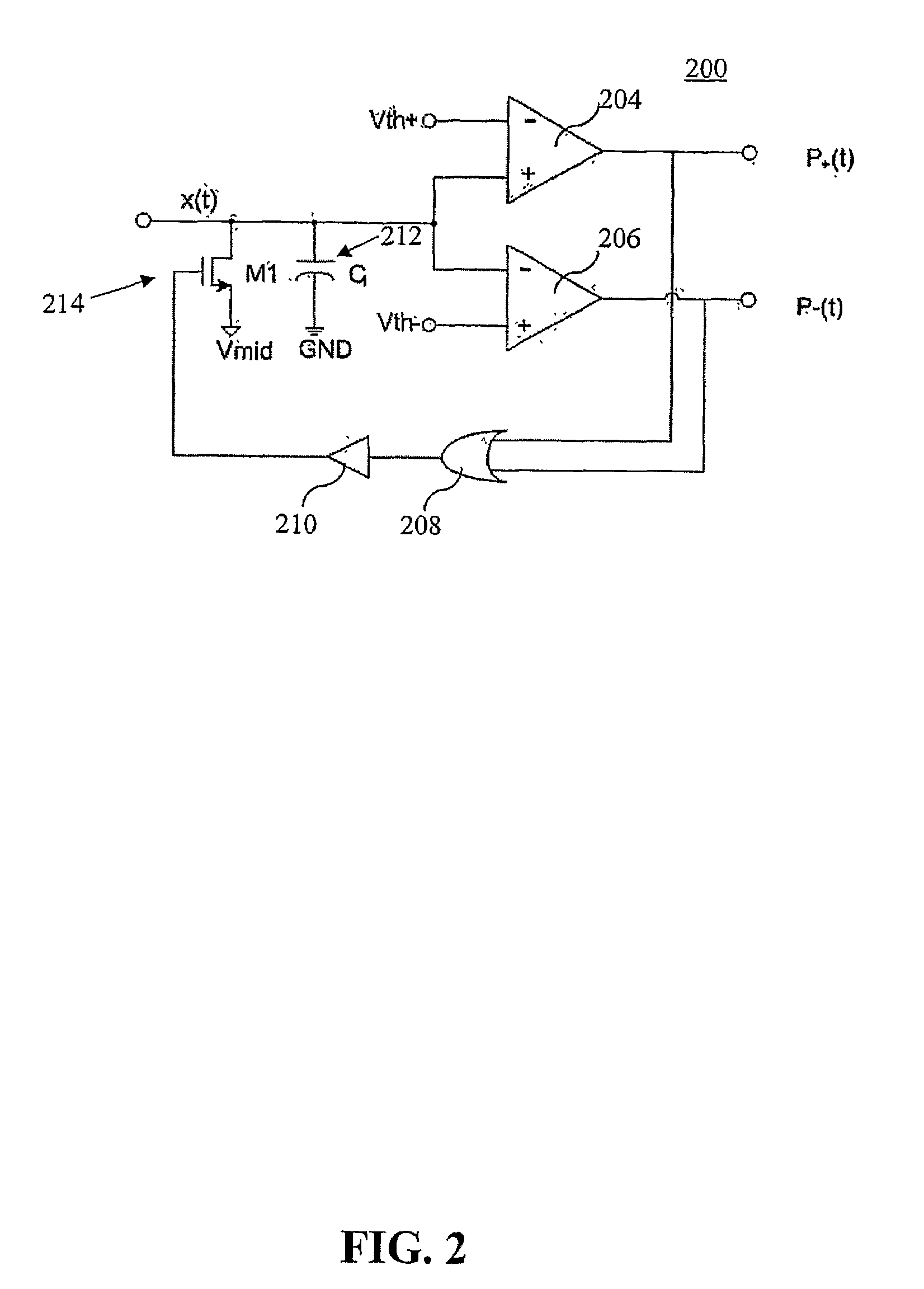Device and Methods for Biphasic Pulse Signal Coding
a pulse signal and biphasic technology, applied in pulse conversion, phase-modulated carrier systems, instruments, etc., can solve the problems of consuming a/d converters, severely restricting the performance of data acquisition devices, and limiting the power and bandwidth of many data acquisition devices, so as to achieve the effect of easy extension of coding
- Summary
- Abstract
- Description
- Claims
- Application Information
AI Technical Summary
Benefits of technology
Problems solved by technology
Method used
Image
Examples
examples
Synthetic Signal Simulation
[0050]The invention can be demonstrated by the results of synthetic signal simulation, where the synthetic signal is defined as a superposition of admissible frequencies with random amplitude. In FIG. 4(a), the bandwidth of an input signal is 5 KHz. The threshold θ is 5.6×10−5. The corresponding output pulse train with the maximum timer interval δ is 95.7 μs. The total number of pulses is 157. FIG. 5(a) shows the recovery results based on the above-described iterative algorithm. The error, in FIG. 5(b), is defined here as the difference between the original signal and the recovered signal:
el(t)=x(t)−xl(t).
[0051]The signal-to-error ratio (SER) is the power ratio between the original signal and the recovered signal. The SER can be used to evaluate the convergence performance. According to the previous equation for the error, the slope of the SER should be approximately equal to 0.38 dB per iteration. FIG. 6 demonstrates the agreement of the results with the ...
PUM
 Login to View More
Login to View More Abstract
Description
Claims
Application Information
 Login to View More
Login to View More - R&D
- Intellectual Property
- Life Sciences
- Materials
- Tech Scout
- Unparalleled Data Quality
- Higher Quality Content
- 60% Fewer Hallucinations
Browse by: Latest US Patents, China's latest patents, Technical Efficacy Thesaurus, Application Domain, Technology Topic, Popular Technical Reports.
© 2025 PatSnap. All rights reserved.Legal|Privacy policy|Modern Slavery Act Transparency Statement|Sitemap|About US| Contact US: help@patsnap.com



